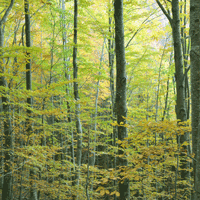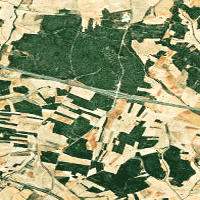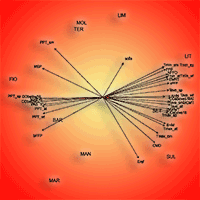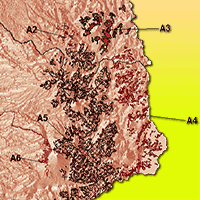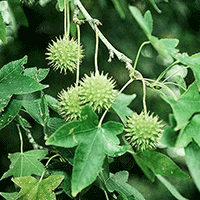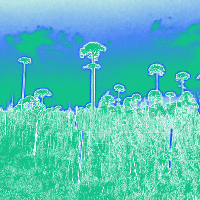
Networking sampling of Araucaria araucana (Mol.) K. Koch in Chile and the bordering zone of Argentina: implications for the genetic resources and the sustainable management
F Drake (1), MA Martín (2) , MA Herrera (3), JR Molina (3), F Drake-Martin (4), LM Martín (2)
iForest - Biogeosciences and Forestry, Volume 2, Issue 6, Pages 207-212 (2009)
doi: https://doi.org/10.3832/ifor0524-002
Published: Dec 22, 2009 - Copyright © 2009 SISEF
Research Articles
Collection/Special Issue: EFI 2008 Annual Conference Week - Orvieto (Italy)
Adaptation of Forest Landscape to Environmental Changes
Guest Editors: Giuseppe Scarascia Mugnozza (CRA - Rome, Italy)
Abstract
Araucaria araucana, a southern South American tree species, is considered a representative symbol of Chilean forest biodiversity due to its endemicity and longevity. An expedition to Chile and its border zone with Argentina was carried out with the aim of determining the current state of this species and to establish a tree network to study its genetic variability. Eight locations were selected across the range of distribution of the species and several experimental plots were established based on the heterogeneity within each location. Field trips revealed a high fragmentation in Araucaria forests showing low or non-existent regeneration in most of its distribution area. Experimental plots allowed the identification of severely altered areas. Moreover, 371 trees were catalogued, 193 males and 178 females. The tree network established will be very useful in future evaluations of both the ecological status of the species and its genetic resources, allowing the development of conservation strategies.
Keywords
Araucaria araucana, Biodiversity, Ecological attributes, Genetic resources
Authors’ Info
Authors’ address
Departamento de Manejo de Bosques y Medioambiente, Facultad de Ciencias Forestales, Universidad de Concepción, Casilla 160-C, Concepción (Chile)
JR Molina
Departamento de Ingeniería Forestal, Escuela Técnica Superior de Ingenieros Agrónomos y de Montes, Edificio Leonardo Da Vinci, Universidad de Córdoba, ES-14071 Córdoba (Spain)
Private Company, León Gallo 0548, Temuco (Chile)
Corresponding author
Paper Info
Citation
Drake F, Martín MA, Herrera MA, Molina JR, Drake-Martin F, Martín LM (2009). Networking sampling of Araucaria araucana (Mol.) K. Koch in Chile and the bordering zone of Argentina: implications for the genetic resources and the sustainable management. iForest 2: 207-212. - doi: 10.3832/ifor0524-002
Academic Editor
Marco Borghetti
Paper history
Received: Apr 08, 2009
Accepted: Nov 09, 2009
First online: Dec 22, 2009
Publication Date: Dec 22, 2009
Publication Time: 1.43 months
Copyright Information
© SISEF - The Italian Society of Silviculture and Forest Ecology 2009
Open Access
This article is distributed under the terms of the Creative Commons Attribution-Non Commercial 4.0 International (https://creativecommons.org/licenses/by-nc/4.0/), which permits unrestricted use, distribution, and reproduction in any medium, provided you give appropriate credit to the original author(s) and the source, provide a link to the Creative Commons license, and indicate if changes were made.
Web Metrics
Breakdown by View Type
Article Usage
Total Article Views: 54967
(from publication date up to now)
Breakdown by View Type
HTML Page Views: 45873
Abstract Page Views: 3580
PDF Downloads: 4311
Citation/Reference Downloads: 17
XML Downloads: 1186
Web Metrics
Days since publication: 5867
Overall contacts: 54967
Avg. contacts per week: 65.58
Citation Metrics
Article Citations
Article citations are based on data periodically collected from the Clarivate Web of Science web site
(last update: Mar 2025)
Total number of cites (since 2009): 6
Average cites per year: 0.35
Publication Metrics
by Dimensions ©
Articles citing this article
List of the papers citing this article based on CrossRef Cited-by.
References
Variación en Araucaria araucana (Molina) K.Koch. In: “Variación intraespecífica en especies arbóreas de los bosques templados de Chile y Argentina” (Donoso C, Premolia A, Gallo L, Ipinza R eds). Editorial Universitaria, Santiago, Chile, pp. 215-232.
Gscholar
The regeneration dynamics of Araucaria araucana. PhD thesis, University of Colorado, Bolder, USA, pp. 195.
Gscholar
Tipos forestales de los bosques nativos de Chile. Documento de trabajo no. 38, Investigación y Desarrollo Forestal FAO/DP/ CHI/76/003, Santiago, Chile, pp. 70.
Gscholar
Bosques templados de Chile y Argentina: variación, estructura y dinámica. Edición Universitaria, Santiago, Chile, pp. 308-351.
Gscholar
Las especies arbóreas de los bosques templados de Chile y Argentina. Autoecología. Marisa Cúneo Ediciones, Valdivia, Chile, pp. 678.
Gscholar
Compendio de funciones dendrométricas del bosque nativo. Proyecto de conservación y manejo sustentable del bosque nativo, Universidad de Concepción, CONAF y Sociedad Alemana de Cooperación Científica, Santiago, Chile.
Gscholar
Uso sostenible en bosques de Araucaria araucana (Mol.) K. Koch. Aplicación de modelos de gestión. PhD thesis, University of Cordoba, Spain.
Gscholar
Vegetación del bosque de Araucaria araucana (Mol.) C. Koch. en la Cordillera de los Andes (Lonquimay, provincia de Malleco). Boletín Técnico no. 57, Facultad de Ciencias Forestales, Universidad de Chile, Santiago, Chile, pp. 25.
Gscholar
Conservación, manejo y uso sustentable de los recursos genéticos de la Araucaria araucana en Argentina, Comunidades Aucapan y Chiuquilihuin, San Carlos de Bariloche. Report of the Project Conservation, Management and Sustainable Use of Forest Genetic Resources with reference to Brazil and Argentina. International Plant Genetic Resources Institute, Rome, Italy.
Gscholar
Enciclopedia de los bosques chilenos. Gráfica Andes, Santiago, Chile.
Gscholar
Cotyledon storage proteins in European sweet chestnut. Acta Horticulturae 693: 459-463.
Gscholar
Uso de las proteínas de reserva del megagametofito como marcador de la diversidad genética en Abies pinsapo. Cuad. Soc. Esp. Cienc. For. 24: 63-66.
Gscholar
La bio-ecología de Araucaria araucana (Mol.) Koch. Instituto Forestal Latino-Americano de Investigación y Capacitación Boletín 46-48: 1-55.
Gscholar
Análisis de la productividad de semillas de Araucaria araucana (Mol.) C. Koch. En el área de Lonquimay-IX Región. PhD thesis, University of Chile, Santiago, Chile.
Gscholar
Prospección, diversidad genética y conservación de ejemplares monumentales y poblaciones silvestres de olivo (Olea europaea L.). PhD thesis, University of Cordoba, Spain.
Gscholar
Ensayo de tratamientos experimentales en bosques de Araucaria araucana (Mol.) C. Koch. en la zona del Lago Moquehue, provincia de Neuquén, Argentina. Rev For Arg 14 (4): 109-117.
Gscholar
Verjüngungsstrategien von Araucaria araucana (Mol.) Koch. in Waldgesellschaften Südchiles. Master dissertation, Universität Bayreuth, Germany.
Gscholar
Determinación de las áreas prioritarias de actuación en masas de Araucaria araucana (Mol.) K. Koch de Chile. Trabajo Profesional Fin de Carrera, ETSIAM, University of Cordoba, Spain.
Gscholar
Reproducción vegetative natural de Araucaria araucana (Mol.) C. Koch. Investigaciones Agricultura (Chile) 2: 121-122.
Gscholar
La explotación racional de los bosques de araucaria de Neuquén. Servir 6: 1-53.
Gscholar
The ecology of the conifers of southern South America. In: “Ecology of the southern conifers” (Enright N, Hill R eds). Melbourne, pp. 120-155.
Gscholar


